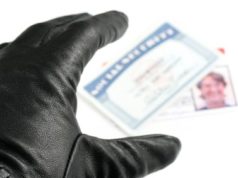
Detecting bankruptcy fraud is no easy feat, because the entire point of such fraud is to make it appear as a regular bankruptcy case. Fraud cases often go completely undetected because they are indistinguishable from most bankruptcy cases.
The primary methods for detecting bankruptcy fraud cases have been case reviews and tips. The case reviews give a good overview of any given bankruptcy case, and can help examiners to determine if there are any strange elements to a specific case that might correlate to bankruptcy fraud law. But even so, generally it requires human judgment to make an assessment that any given case is fraudulent.
Such human judgment is obviously far from infallible, but no statistical analysis or computerized system would be able to pick up on the important inconsistencies, as all bankruptcy fraud cases involve slightly different procedures, and likely do not have enough statistical similarity to formulate a standard distribution curve, from which fraud cases would deviate.
Tips are vital to detect fraud cases, as well, because tips provide some of the most concrete information that could be available to fraud investigators. A tip could clue investigators in as to what elements of each fraud case should be focused on. As an example, a tip could inform investigators that a particular case is more a matter of multiple filings than it is a matter of concealed assets, and therefore allow investigators to better focus their energies.
Full reports given by informants can even provide all the necessary information for prosecuting bankruptcy fraud cases under fraud law, assuming that the reports themselves are accurate, and that the information contained within was obtained legally. The problem with tips as a method of investigating fraud cases is that informants are not always available to provide tips.
Often, there will be no one close to a given potentially fraudulent bankruptcy case who is willing or able to share any information of use to investigators. The success of tips in detecting bankruptcy fraud cases depends entirely on the willingness of informants to work with investigative bodies.
A relatively recent law attempts to use another means to detect bankruptcy fraud cases: debtor audits. The Bankruptcy Abuse Prevention and Consumer Protection Act is a law enacted in 2005, which has made several changes to the way that bankruptcy cases are handled in America. The most important change for detecting fraud cases was that 1 out of every 250 randomly collected chapter 7 and chapter 13 bankruptcy applicants were singled out to be audited in order to determine if their cases were satisfactorily standard.
The idea was that such random checks would bring cases which might otherwise never have been noticed into the eyes of investigators, who would then be able to determine whether or not those cases did actually fall under the purview of bankruptcy fraud law. There were also certain standard criteria for cases that would consistently be audited, regardless of the random determinations, simply because those cases were suitably suspicious.
Unfortunately, however, budget issues have arisen, and now the BAPCPA audits are only happening with 1 out of every 1000 applicants, thus casting a significantly smaller net. The potential for these audits to successfully find bankruptcy fraud cases overall, then, is drastically reduced.























